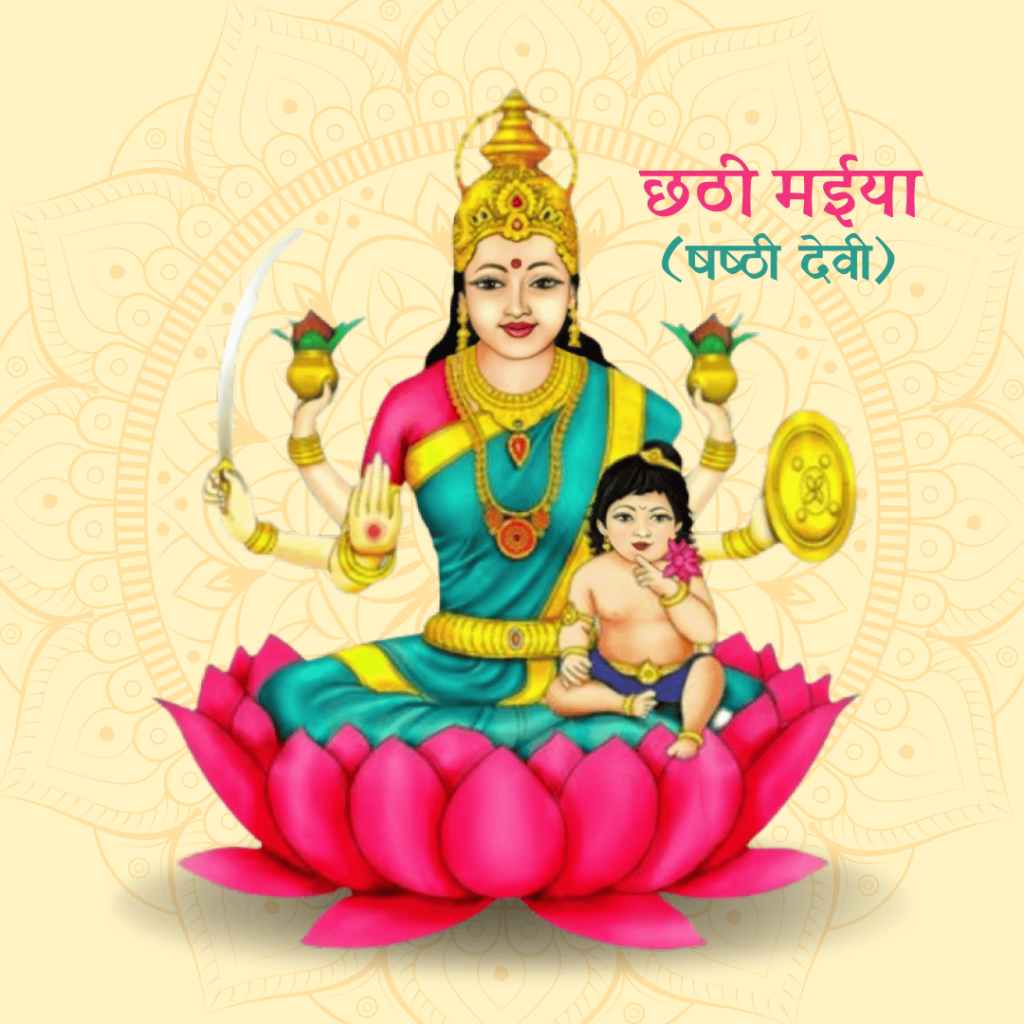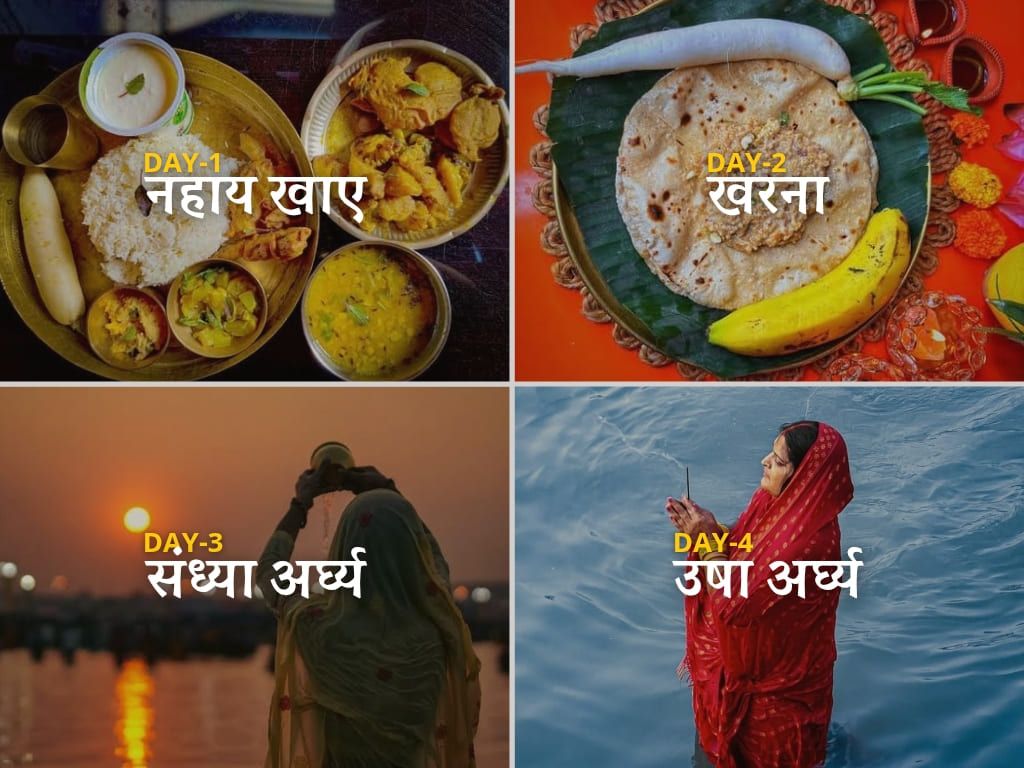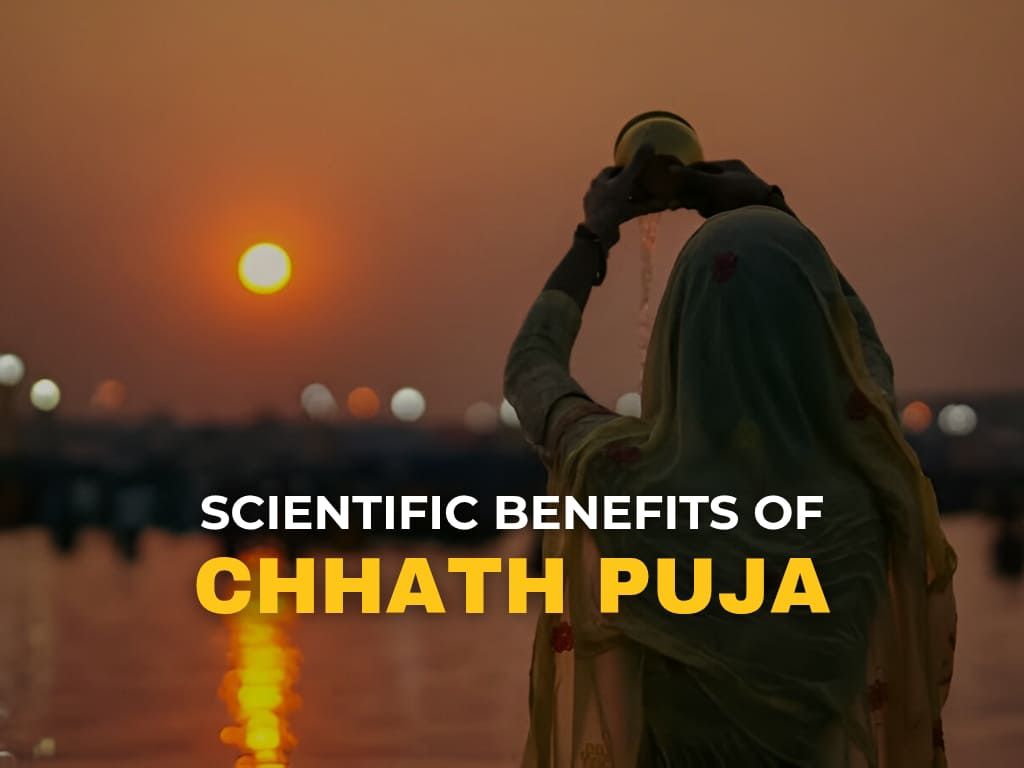Chhath Puja: The Eco-Scientific Festival of Sun Worship!

Discover how Chhath Puja benefits the environment, promotes river cleanliness, and has deep scientific importance linked to solar energy and fasting.
Chhath Puja isn’t just a festival—it’s an emotion for Biharis. It is a festival that makes Biharis drop everything and return home. No matter where they are, they make sure to be at their nearest ghat. Even those who have settled thousands of miles away, in Dubai, New York, or London, find a river or lake to offer their arghya.
What exactly is Chhath Puja?

Chhath Puja is an ancient Hindu festival dedicated to the Sun God (Surya Dev) and Chhathi Maiya (also known as Shashti Devi). Chhathi Maiya is Surya Dev’s sister and is associated with well-being and fertility.
Chhath is a four-day festival where devotees, (both men and women), observe strict rituals, including fasting, taking holy dips in rivers, and offering prayers to the rising and setting sun. They pray for the well-being of their family, prosperity, and health.
Chhath Puja is celebrated twice a year, but the one observed 6 days after Diwali, known as Kartik Chhath, is the most famous and widely celebrated. It falls in October-November and holds deep cultural and religious significance.
The other, Chaiti Chhath, is observed in March-April during the Chaitra month. While both follow the same rituals, Kartik Chhath is considered more significant and is celebrated on a much larger scale.
Chhath Vrat is considered the most important and hardest fast in Sanatan Dharma, but that doesn’t stop devotees from practicing it! The sight of millions standing in knee-deep water, fasting for 36 hours without a drop of water, praying to the Surya Dev—this isn’t just devotion, it’s madness.
Although people link Chhath Puja to Bihar, it is also celebrated in Jharkhand, Eastern Uttar Pradesh (Purvanchal), and Nepal’s Terai region.
How is Chhath Puja celebrated?

Purity holds the highest significance in Chhath Puja. While most Hindu festivals have undergone changes over time and lost their authentic traditional practices, Chhath Puja remains untouched in its original form. The same age-old rituals, strict discipline, and sattvic (pure) lifestyle are still followed with pure devotion.
The four days of Chhath Puja are observed as follows :
Day 1: Nahay-Khay (नहाय-खाय) – Purification Begins
The festival begins with devotees taking a holy dip in a river or pond, usually the Ganges or any nearby water body. If that is not possible- they bathe at home normally.
They clean their homes and prepare a simple, sattvic meal, consisting of kaddu-bhat (pumpkin and rice) and dal cooked in clay or bronze utensils.
This meal is first offered to the Sun God. The devotees who are fasting eat first, and then the rest of the family members have it.
Day 2: Lohanda/Kharna (लोहंडा/खरना) – The Day of Fasting
Devotees observe a strict fast for the entire day, without even drinking water.
In the evening, after sunset, they prepare kheer (a sweet dish made of jaggery, rice, and milk), roti (chapati), and bananas as an offering to the Sun. Every meal (prasad) is strictly made in earthen pots or bronze utensils.
Then this Prasad is first offered to the deity and then consumed by the devotee, marking the completion of the second day. After this, a 36-hour Nirjala Vrat (waterless fast) begins.
Day 3: Sandhya Arghya (संध्या अर्घ्य) – Offering to the Setting Sun
This is the most vibrant and significant day of Chhath Puja.
Devotees, dressed in traditional attire, carry soop (a bamboo tray) filled with fruits, thekua (special Prasad), and other offerings to a nearby river, pond, or water body.
At sunset, they stand in knee-deep water and offer Arghya (water along with prayers) to the setting sun. This makes Chhath Puja the only festival in which the setting sun is worshipped.
That’s why it is popularly said that “Only the Bihari community worships the setting sun before the rising sun”. This symbolizes that what has fallen will rise again—a message of resilience and comeback.
Day 4: Usha Arghya (उषा अर्घ्य) – Offering to the Rising Sun
Before sunrise, devotees, along with family and friends, return to the riverbank.
They again offer Arghya to the rising sun, praying for health, prosperity, and happiness.
After the final prayers, the fast is broken by eating Prasad, bringing the festival to a joyful conclusion.
The History of Chhath Puja

Chhath Puja has deep roots in ancient traditions and scriptures. Its origins are intertwined with Vedic practices, epic narratives, and royal legends.
Vedic Origins
Chhath Puja is believed to originate from ancient Vedic traditions, where sages worshipped the Sun God (Surya) through rituals and hymns found in texts like the Rigveda.
Ramayana Connection
In the Ramayana, after returning to Ayodhya, Lord Rama and Mata Sita observed a fast and offered prayers to the Sun God, a practice linked to Chhath Puja. The organized festival of Chhath Puja, as we know it today, is believed to have been first performed by Mata Sita at the Sita Charan Mandir in Munger.
Mahabharata Connection
The Mahabharata mentions that Kunti performed Chhath Puja after escaping the Lakshagriha incident. Additionally, Karna, son of Surya and Kunti, was a devout sun worshiper, reflecting the festival’s significance.
Royal Association
Local stories speak of King Priyavrata and Queen Malini, who, after performing a yajna advised by sage Kashyapa, were blessed with a child. This tale made the festival’s association with fertility and blessings.
Why is the Sun Worshipped?
In Hinduism, the Sun is considered the ultimate source of energy and life. Worshipping the Sun is believed to bring health, longevity, and happiness. Unlike other Hindu festivals that involve idol worship, Chhath Puja is unique because it directly honors a natural deity—the Sun.
The Science Behind Chhath Puja

While Chhath is rooted in faith, its rituals have strong scientific reasoning:
Sunlight Therapy: Worshiping the sun at sunrise and sunset helps the body absorb Vitamin D, boosts serotonin (the happiness hormone), and balances melatonin, which regulates sleep.
Detoxification: The 36-hour fast helps eliminate toxins, improves digestion, and strengthens immunity. This fasting is also scientifically linked to autophagy, a process that helps in cellular repair and renewal.
Ultraviolet Protection: The Sun’s infrared rays (low-intensity UV rays) at sunrise and sunset are beneficial for the body, unlike the harsh UV rays of midday.
Mental Discipline: The strict fasting and self-control enhance willpower and emotional resilience.
Hydrotherapy: Standing in water for long durations regulates the nervous system and improves blood circulation.
Eco-Therapy: The festival’s connection with nature—rivers, fresh air, and organic foods—contributes to overall well-being.
Thank you for taking the time to read this article. We hope you found the information valuable. Stay tuned in for more.
LittiChokha is one of the leading News & Media company based in Patna, Bihar. We make sure the news we provide is authentic and has undergone multiple Fact-Checks.





